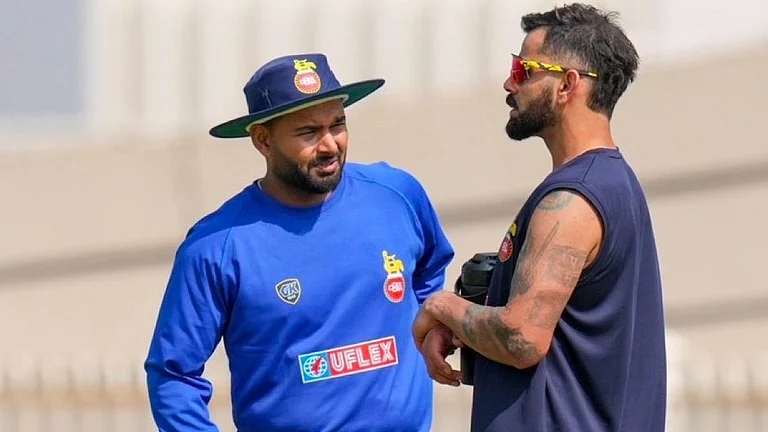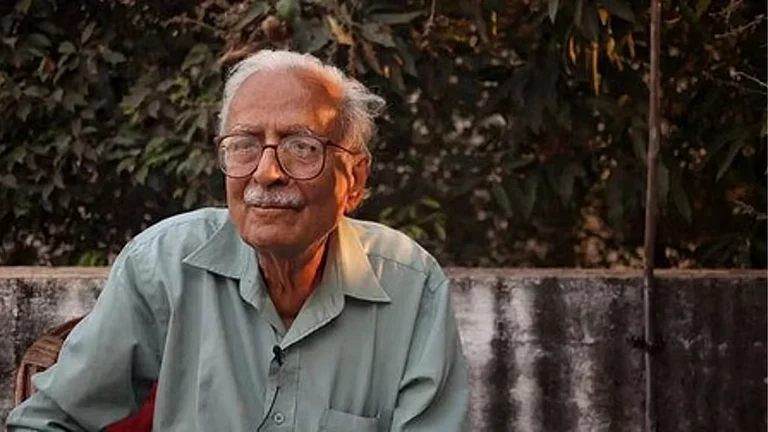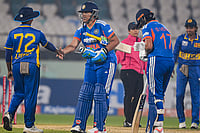Three weeks ago there was a small protest in Delhi whose significance was in inverseproportion to its lack of impact on the newspaper-reading public. In a movingceremony, 13 of the country's most respected and talented dancers rang thedeath knell of classical performing arts in India. Their immediate target wasthe media.
In ajointly-read out statement they condemned the crass commercialism that hadgripped the Indian media, and held it primarily responsible for snuffing outthe classical performing arts. As newspapers grew fatter and TV channelsproliferated, the space given to both classical music and classical dance haddwindled. Doordarshan made a pretence of support but slated its nationalprogrammes for midnight, when only Indians with insomnia were awake. As for thenewspapers, led by the venerable Times of India, most of them had even given upreviewing recitals and performances. Sunday papers, which had till a decade agodevoted entire pages to the arts, had abolished these and devoted the space tomotorcars, lifestyles of the rich and famous, and the share market. Theyconcluded by warning the public that if the present neglect continued, Indiawould lose its most priceless heritage - one that had taken more than 2,000 yearsto build and perfect - in one generation.
The dancers' cry of despair was swallowed bythe night wind. One newspaper considered it more important to highlight thewounded ego of a dancer who had not joined the protest because its organisershad not grovelled enough. Others were struck dumb by the fact that a tribenotorious for its internal bickerings and jealousies could actually share thesame platform. Still others Ônoticed' in passing that while the dancers claimedto speak for all the performing arts, there were in fact no musicians on thedais with them. Music, they implied, was not endangered by this apparentneglect, so if dance was, then the fault might somehow lie with the dancersthemselves.
Theorganisers of the protest haven't given up. They describe their first meetingas only the beginning of a long campaign. But their fragile unity might crumbleon a second collision with the wall of indifference. This will be a loss notonly of what India's inherited from the past and is so casually taking forgranted, but the loss of what this heritage can do for our future. What we risklosing is an awe-inspiring tradition of aesthetics and perhaps the mostsophisticated systems of dance and music humanity's ever produced. What thiscould deprive us of in the future is the essential component of Indian identityneeded to weld India's distinct ethnic communities into a single nation.
Thistradition is at risk because it is an oral one. Despite its codification inmonumental treatises like the Natya Shastra, the Abhinaya Darpana and theAbhinayachandrika, this tradition, especially its finer points of aestheticsand presentation, is passed on almost entirely through direct teaching in theguru-shishya parampara. Today that thread of continuity from one generation tothe next is on the verge of breaking. The great gurus, who lived in and aroundthe temples, safeguarded the tradition and trained dancers but seldom dancedthemselves, are all but gone. Their pupils, professional dancers of today, havemany students but literally none who wish to become professional dancersthemselves. Much the same erosion is taking place in music but in a differentform. Here the problem is not a dearth of performers but of those steeped inthe knowledge of their art form. There are thus more and more of them with lessand less knowledge of their art.
Theresult is that the edifice of gharanas in north Indian music, those purelyaural, unwritten conventions passed on within musical families from generationto generation is collapsing into a shapeless, formless ruin. Music stillemerges, but we no longer know whether it is coming from the dining hall or thebedroom.
Thedancers chose to criticise the insouciance of the media but the neglect that'sbrought the neglect is unthinkingly all-pervasive. Love of and respect forone's heritage is best inculcated in childhood. Are music, dance, Indianliterature or poetry part of the cbse or icsc curricula? No. Has Doordarshancreated a channel like bbc-2 or 3 or French Radio's Antenne Deux, devoted tothe arts? No! Has any state authority created a centre for the performing artsin one Indian city? No! Are there health insurance or old age support systemsfor performing artistes? Is there a scholarship specifically designed to fosterand perpetuate the guru-shishya parampara? Yes, but rudimentary and inadequate.When there are no support systems, no literate audiences, and no acknowledgedand permanent venues for performance, why should anyone become a musician or adancer?
And whyam I making such a fuss about the performing arts? Why not literature, drama,painting or sculpture? Are they not equally threatened? The answer is thatperforming arts have a special place in nation-building that others cannotfill. Literature is the most powerful single tool of nationalism. But itremains bound by the limits of the language it's written in. In multi-ethnicsocieties without strong bonds literature can turn into a potent force forrevolt. Fine arts speak a universal language but unlike the social realism ofthe 19th century, today they're so highly individualistic that they're devoidof social content. Only the performing arts speak a language that crosses allbarriers and speaks directly to the heart. This is all the more so in Indiawhere they're informed by a universal system of aesthetics - the theory ofrasa - itself a product of a profound cultural integration. The Indian nationstate, which therefore has the most to lose, is the least concerned about theloss. The media's attitude is only the last, and unkindest, cut.























